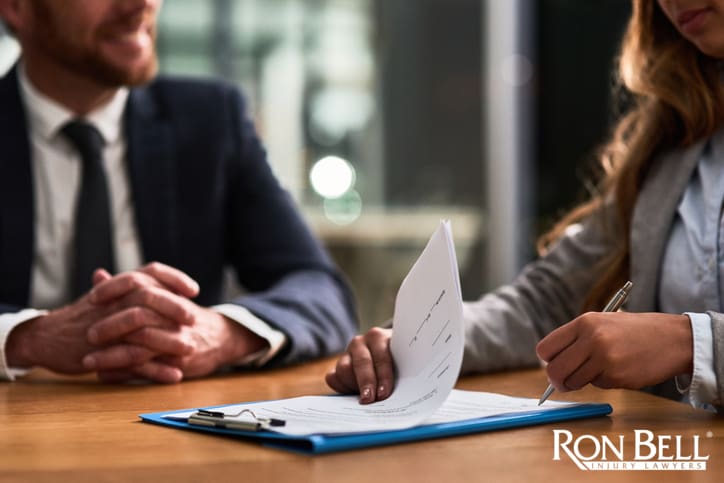
Stages of a Personal Injury Case in New Mexico – Part III: Negotiating a Settlement or Filing a Lawsuit
February 15, 2019
In this final part of our three-part series, we explore what a demand letter is and why trying to reach a settlement before the trial may be in the best interest of the injured party. We also take a look at situations in which an attorney may decide to file a lawsuit on behalf of their client and the legal proceedings leading up to a trial and verdict.
Step 4: Demands & Potential Settlement
In most cases, before an attorney will consider filing a lawsuit, they will first try to reach a settlement with the at-fault party and their insurer. In fact, according to some research, as much as 95 to 96% of all personal injury cases are settled pre-trial. This, however, doesn’t mean that most lawyers simply prefer the path of least resistance. Rather, before filing a lawsuit, a lawyer will make a set of demands to the at-fault party and their attorneys that best represent their client’s interests. In doing so, the lawyer is aiming at the best possible outcome for the client as reaching a settlement early on may bring concrete and immediate benefits to the injured party. A trial, on the other hand, while sometimes necessary, can also be unpredictable and considerably more time-consuming.
Demand Letter
In order to officially make a demand, an attorney will create a demand letter. The contents of such a letter will include the reasons for which the demand is being made, that is, the circumstances of the accident, the parties involved, the injuries sustained by the victim. The letter will also explain why the other person is deemed to be at-fault and hence responsible for the injuries sustained by the victim. The demand will also enumerate the injured party’s damages – that is, the losses sustained by the victim as a result of the injuries. These usually include medical bills, lost wages, pain and suffering, and more. Finally, the letter will state the total amount of financial compensation demanded.
Rarely, however, does the at-fault party simply agree to the demands presented in the letter. More likely, the at-fault party’s lawyer will respond to the initial letter with counterarguments trying to lower the amount of compensation. Such negotiations can go back and forth for some time until both parties manage to achieve a satisfying settlement agreement. However, if a settlement cannot be reached because the at-fault party is unresponsive, or because the offers they present are much lower than the actual value of the victim’s claim, the injured person’s attorney will likely move to the next stage in the personal injury process – the lawsuit.
Step 5: Personal Injury Lawsuit
The legal proceedings are initiated when the injured party – now, in the context of the personal injury lawsuit, formally called the plaintiff – files a formal complaint with the court. The complaint is called the pleading. Of course, the plaintiff’s lawyer will tend to all the formalities related filing the complaint. In the pleading, the plaintiff explains the reasons for the lawsuit and states what damages they demand. The at-fault party – now formally called the defendant – may offer an answer to the pleading in which they admit to or deny the wrongdoings claimed by the plaintiff.
The lawsuit itself proceeds according to certain fixed steps defined by the law. They include:
- Discovery – the stage in which both parties gather information in the preparation for the trial. This stage normally involves legal devices such as depositions (taking of an oral statement from witnesses before the trial), interrogatories (written questions), requests for admissions (when one party asks the other for an admission or denial of the truthfulness of a statement under oath) and requests for production of documents (when one party asks the other for a copy of certain documents)
- Pre-trial motions – in which the parties are allowed to make certain requests with the court, for example, that certain evidence be excluded from the trial
- Settlement talks – in which both parties try to negotiate a settlement. Settlement talks can occur both before and during the trial but a settlement must be reached before the verdict is pronounced.
- Trial – in which both sides present their evidence, examine witnesses, show expert testimonies, etc.
- Verdict – is the formal ending can be given either by the jury or the judge. The verdict determines if the defendant is liable for the injuries sustained by the plaintiff. It also specifies the amount of damages or financial compensation the defendant must pay to the plaintiff
We hope that the information presented in this series will help accident victims and their families who may have a personal injury claim to decide whether to pursue their rights to fair compensation by the means of a personal injury claim in New Mexico.
If you missed the first two parts in this series, you can read them here:
Part I – Seeking Medical Attention
Part II – Choosing An Attorney & Reviewing Your Claim
